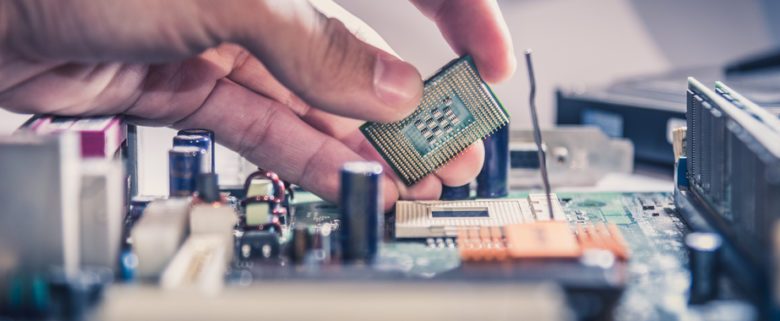Top Things To Consider About VLSI Engineering

While the latest in VLSI circuit trends might be a bit out of reach for most small-time engineers, you still need to keep a few things in mind when working with this technology. This will look at some of the top things you need to know to succeed as a VLSI engineer.
What is VLSI Engineering?
VLSI (large-scale integration) is use in electronic design and manufacturing to create integrate circuits. It creates complex electronic devices by combining smaller circuits into larger ones.
VLSI has many benefits over traditional VLSI engineering methods. It can create more complex and powerful circuits faster and more energy efficient. Additionally, VLSI can use to create more diverse and flexible chips than traditional methods can. This makes it ideal for devices that need high performance, flexibility, and low power consumption.
VLSI is use in many products, including smartphones, computer chips, medical devices, and car engines. It is also being use to create new types of electronics that have never been possible before.
What are the benefits of VLSI Engineering?
VLSI (vacuum-tube semiconductor) engineering is a process that uses computer-aided design and simulation tools to create circuits for electronic devices. These circuits are make up of tiny, interconnect vacuum tubes.
The benefits of VLSI engineering are many. For one, it is an efficient way to create complex circuits. VLSI engineering allows you to create multiple circuit versions using different design parameters. This means you can get the circuit exactly how you want it without compromising on performance.
Another benefit of VLSI engineering is that it is flexible. This is because you can create compatible circuits with other devices and systems. This makes it easy to integrate new features into existing products.
Finally, VLSI engineering is reliable. This is because the design process is well-tested before it goes into production. Therefore, you can be sure that your products will work as intended.
What are the different types of VLSI Design?
VLSI design is designing and creating digital circuits using traditional analogue design tools. There are several types of VLSI design, each with its unique set of benefits and challenges.
The most common type of VLSI design is the microfluidics-on-chip (MOC) design. In MOC design, microfluidic devices are place on a single chip. This allows for more complex designs and faster fabrication. MOC design is also easier to program than other types of VLSI design.
Another common type of VLSI design is the field-programmable gate array (FPGA) design. FPGAs are programmed to perform specific functions, such as circuit simulation or digital signal processing. They are often used in applications where speed and flexibility are important factors.
Last but not least, a mixed-signal VLSI design is a combination of microfluidics and FPGA designs. Mixed-signal VLSI designs allow for more complex functionality than either microfluidics or FPGA designs alone can achieve.
What are the different types of VLSI Designs?
There are several types of VLSI designs, each with its own benefits and drawbacks.
One type of VLSI design is the CMOS design. This design uses tiny switches to control the flow of electrical signals through the chip. CMOS designs are very fast and efficient but can also be sensitive to noise and circuit variations.
Another type of VLSI design is the FPGA design. This type of design uses custom-made chips to handle complex mathematical calculations. FPGA designs are much more powerful than CMOS designs but can also be more expensive and difficult to program.
Other types of VLSI designs include the DSP design and the ASIC design. DSP designs are similar to FPGA designs because they use custom-made chips to perform complex mathematical calculations. However, DSP designs are much faster and more versatile than FPGA designs. ASIC designs are similar to CMOS designs in that they use tiny switches to control the flow of electrical signals through the chip. However, ASICs are much more powerful than CMOS designs and can be use to create very large chips.
What are the different types of CAD/CAM SOFTWARE?
There are various types of CAD/CAM software available on the market. Here are some of the most common:
Solidworks is a popular CAD/CAM software engineers and designers use to create 3D models and drawings. It has a user-friendly interface and is widely accept by engineers.
Autodesk Inventor is another popular CAD/CAM software that is use by engineering teams to design products and machines.
Catia is a common CAM software use in automotive manufacturing. It offers advanced features for designing parts and assemblies, as well as for simulating how products will behave in the real world.
What are the different types of ENGINEERING PROTOTYPES?
There are a variety of different engineering prototypes, and each has its own unique features and benefits. Here are the top four types of engineering prototypes:
- Hardware Prototype – This type of prototype is used to test the design and functionality of a specific hardware item. It is often used to test how the item will work in actuality, as well as how it will perform under various conditions.
- Software Prototype – A software prototype is similar to a hardware prototype, but it is used to test the design and functionality of a software program. It is often use to test how the program will work in actuality, as well as how it will perform under various conditions.
- Service Prototype – A service prototype is design to simulate the complete customer experience when using an online service or application. It often includes features that are not yet available in the actual product or service.
- Prototype System – A prototype system combines two or more types of engineering prototypes. It is use to create a fully functioning product or service that can be test in the real world.
What are the different types of SECTORS OF INDUSTRY
There are several different sectors of industry that use VLSI engineering, including automotive, telecommunications, and medical devices. However, the most common use of VLSI engineering is in the automotive industry.
VLSI engineering is use to create complex electronic circuits. These circuits are use in various vehicles, from cars to smartphones. VLSI circuits are often more efficient and faster than traditional circuit designs. This makes them ideal for high-performance vehicles.
Another advantage of VLSI circuits is their flexibility. They can be customize to meet the specific needs of a particular application. This allows companies to create unique products that no other company can offer.
VLSI engineering is a complex process, but it offers many benefits that make it an important part of the automotive industry.
Conclusion
After reading this top list of things to consider about biggest semiconductor company, hopefully, you have a better understanding of what’s involved and some things you should consider before deciding to pursue a career in this field. While getting started can be daunting (and expensive), the rewards are worth it if you have the tenacity and determination. Thanks for taking the time to read!






